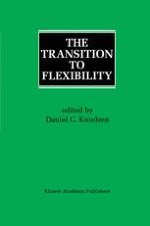1996 | OriginalPaper | Buchkapitel
Labor and Capitalist Accumulation in the Late Twentieth Century: What and Who is Flexible?
verfasst von : Martin Kenney, James Curry
Erschienen in: The Transition to Flexibility
Verlag: Springer US
Enthalten in: Professional Book Archive
Aktivieren Sie unsere intelligente Suche, um passende Fachinhalte oder Patente zu finden.
Wählen Sie Textabschnitte aus um mit Künstlicher Intelligenz passenden Patente zu finden. powered by
Markieren Sie Textabschnitte, um KI-gestützt weitere passende Inhalte zu finden. powered by
A recent Wall Street Journal article reported the new UAW assembly line workers that Chrysler and Ford are currently hiring are far better-educated than their current work force. The UAW is opposed to this effort to hire better-educated workers. Ex-UAW president Fraser was quoted as saying “Let’s face it, it doesn’t take a rocket scientist to work on the assembly line (Templin, 1994).” During the last decade of the twentieth century there have been intense changes underway in the global political economy and these changes are profoundly impacting how we think about labor and labor relations. The proximate cause for this rethinking is the remarkable success of Japanese capitalism. Trying to understand the changes labor is experiencing is, in effect, to try to explain the changes in capitalism itself. As Say er and Walker (1992) aptly point out, there is a reworking and a new, more powerful integration of the global division of labor. This is reflected in and is an aspect of a far deeper and more profound globalization of the wage labor relationship. Importantly, though capitalism has always accumulated on a world scale, in the current period it is penetrating new regions with the intent of integrating the inhabitants into the global marketplace as producers. As importantly, like a virus, it is constantly mutating its surface coating (i.e., labor relations, interfirm relations, the role of managers etc.), while reproducing its essential genetic code. Thus, its tremendous flexibility.
